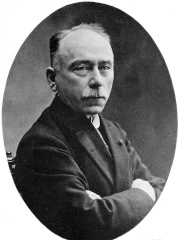
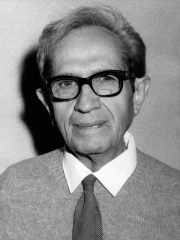
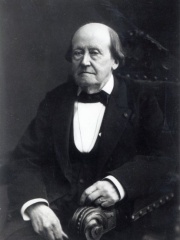
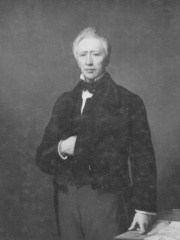
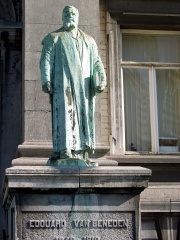

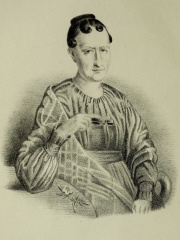
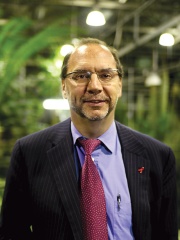
The Most Famous
BIOLOGISTS from Belgium
This page contains a list of the greatest Belgian Biologists. The pantheon dataset contains 1,097 Biologists, 9 of which were born in Belgium. This makes Belgium the birth place of the 19th most number of Biologists behind Norway, and Ukraine.
Top 9
The following people are considered by Pantheon to be the most legendary Belgian Biologists of all time. This list of famous Belgian Biologists is sorted by HPI (Historical Popularity Index), a metric that aggregates information on a biography's online popularity.

1. Jules Bordet (1870 - 1961)
With an HPI of 76.46, Jules Bordet is the most famous Belgian Biologist. His biography has been translated into 66 different languages on wikipedia.
Jules Jean Baptiste Vincent Bordet ( bor-DAY, French: [ʒyl ʒɑ̃ batist vɛ̃sɑ̃ bɔʁdɛ]; 13 June 1870 – 6 April 1961) was a Belgian immunologist and microbiologist. The bacterial genus Bordetella is named after him. The Nobel Prize in Physiology or Medicine was awarded to him in 1919 for his discoveries relating to immunity.

2. Albert Claude (1899 - 1983)
With an HPI of 74.29, Albert Claude is the 2nd most famous Belgian Biologist. His biography has been translated into 55 different languages.
Albert Claude (French pronunciation: [albɛʁ klod]; 24 August 1899 – 22 May 1983) was a Belgian-American cell biologist and medical doctor who shared the Nobel Prize in Physiology or Medicine in 1974 with Christian de Duve and George Emil Palade. His elementary education started in a comprehensive primary school at Longlier, his birthplace. He served in the British Intelligence Service during the First World War, and got imprisoned in concentration camps twice. In recognition of his service, he was granted enrolment at the University of Liège in Belgium to study medicine without any formal education required for the course. He earned his Doctor of Medicine degree in 1928. Devoted to medical research, he initially joined German institutes in Berlin. In 1929 he found an opportunity to join the Rockefeller Institute in New York. At Rockefeller University he made his most groundbreaking achievements in cell biology. In 1930 he developed the technique of cell fractionation, by which he discovered the agent of the Rous sarcoma, as well as components of cell organelles such as the mitochondrion, chloroplast, endoplasmic reticulum, Golgi apparatus, ribosome, and lysosome. He was the first to employ the electron microscope in the field of biology. In 1945 he published the first detailed structure of cell. His collective works established the complex functional and structural properties of cells. Claude served as director at Jules Bordet Institute for Cancer Research and Treatment and Laboratoire de Biologie Cellulaire et Cancérologie in Louvain-la-Neuve; Professor at the Free University of Brussels, the University of Louvain, and Rockefeller University. For his pioneering works he received the Louisa Gross Horwitz Prize in 1970, together with his student George Palade and Keith Porter, the Paul Ehrlich and Ludwig Darmstaedter Prize in 1971, and the Nobel Prize in Physiology or Medicine in 1974 with Palade and his friend Christian de Duve.

3. Henri Milne-Edwards (1800 - 1885)
With an HPI of 64.90, Henri Milne-Edwards is the 3rd most famous Belgian Biologist. His biography has been translated into 28 different languages.
Henri Milne-Edwards (23 October 1800 – 29 July 1885) was a French zoologist.

4. Barthélemy Charles Joseph Dumortier (1797 - 1878)
With an HPI of 64.76, Barthélemy Charles Joseph Dumortier is the 4th most famous Belgian Biologist. His biography has been translated into 27 different languages.
Barthélemy Charles Joseph Dumortier (French: [baʁtelemi ʃaʁl ʒozɛf dymɔʁtje]; 3 April 1797 – 9 July 1878) was a Belgian who conducted a parallel career of botanist and Member of Parliament and is the first discoverer of biological cell division. Over the course of his life, Dumortier named over 688 different taxa, many of which are still in use today. A statue depicting him can be found in Tournai, Belgium, the city where he spent much of his life. The statue was constructed in 1883, by sculptor Charles Fraikin. The statue was damaged by the Germans during World War I, but was repaired. Dumortier is depicted in bourgeois clothes, with his right arm folded over his chest and his left arm leaning on political documents supported by a lion.
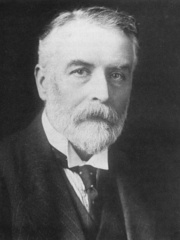
5. George Albert Boulenger (1858 - 1937)
With an HPI of 61.70, George Albert Boulenger is the 5th most famous Belgian Biologist. His biography has been translated into 34 different languages.
George Albert Boulenger (19 October 1858 – 23 November 1937) was a Belgian-British zoologist who described and gave scientific names to over 2,000 new animal species, chiefly fish, reptiles, and amphibians. Boulenger was also an active botanist during the last 30 years of his life, especially in the study of roses.

6. Edouard Van Beneden (1846 - 1910)
With an HPI of 59.88, Edouard Van Beneden is the 6th most famous Belgian Biologist. His biography has been translated into 16 different languages.
Édouard Joseph Louis Marie Van Beneden (5 March 1846 in Leuven – 28 April 1910 in Liège) was a Belgian embryologist, cytologist and marine biologist. He was professor of zoology at the University of Liège. He contributed to cytogenetics by his works on the roundworm Ascaris. In this work he discovered how chromosomes organized meiosis (the production of gametes). He is son of Pierre-Joseph Van Beneden, a zoologist and paleontologist. Van Beneden elucidated, together with Walther Flemming and Eduard Strasburger, the essential facts of mitosis, where, in contrast to meiosis, there is a qualitative and quantitative equality of chromosome distribution to daughter cells. (See karyotype).

7. Émile Auguste Joseph De Wildeman (1866 - 1947)
With an HPI of 58.52, Émile Auguste Joseph De Wildeman is the 7th most famous Belgian Biologist. His biography has been translated into 15 different languages.
Émile Auguste Joseph De Wildeman (19 October 1866, Saint-Josse-ten-Noode – 1947) was a Belgian botanist and phycologist. He is known for his investigations of Congolese flora. From 1883 to 1887, he studied pharmacy at the Université libre de Bruxelles. In 1891, he began work as a preparateur at the Botanical Garden of Brussels, an institution where he later served as director. In 1892, he received his doctorate in sciences (academic advisor, Leo Errera) and in 1926 attained the title of professor.

8. Marie-Anne Libert (1782 - 1865)
With an HPI of 57.51, Marie-Anne Libert is the 8th most famous Belgian Biologist. Her biography has been translated into 19 different languages.
Marie-Anne Libert (born 7 April 1782 in Malmedy, province of Liège, died 14 January 1865 in Malmedy) was a Belgian botanist and mycologist. She was one of the first women plant pathologists. She is sometimes referred to as "Anne-Marie Libert".

9. Peter Piot (b. 1949)
With an HPI of 44.56, Peter Piot is the 9th most famous Belgian Biologist. His biography has been translated into 20 different languages.
Sir Peter Karel, Baron Piot (born 17 February 1949) is a Belgian-British microbiologist known for his research into Ebola and AIDS. After helping discover the Ebola virus in 1976 and leading efforts to contain the first-ever recorded Ebola epidemic that same year, Piot became a pioneering researcher into AIDS. He has held key positions in the United Nations and World Health Organization involving AIDS research and management. He has also served as a professor at several universities worldwide. He is the author of 16 books and over 600 scientific articles.
People
Pantheon has 9 people classified as Belgian biologists born between 1782 and 1949. Of these 9, 1 (11.11%) of them are still alive today. The most famous living Belgian biologists include Peter Piot. The most famous deceased Belgian biologists include Jules Bordet, Albert Claude, and Henri Milne-Edwards.
Living Belgian Biologists
Go to all RankingsDeceased Belgian Biologists
Go to all RankingsJules Bordet
1870 - 1961
HPI: 76.46
Albert Claude
1899 - 1983
HPI: 74.29
Henri Milne-Edwards
1800 - 1885
HPI: 64.90
Barthélemy Charles Joseph Dumortier
1797 - 1878
HPI: 64.76
George Albert Boulenger
1858 - 1937
HPI: 61.70
Edouard Van Beneden
1846 - 1910
HPI: 59.88
Émile Auguste Joseph De Wildeman
1866 - 1947
HPI: 58.52
Marie-Anne Libert
1782 - 1865
HPI: 57.51
Overlapping Lives
Which Biologists were alive at the same time? This visualization shows the lifespans of the 8 most globally memorable Biologists since 1700.

